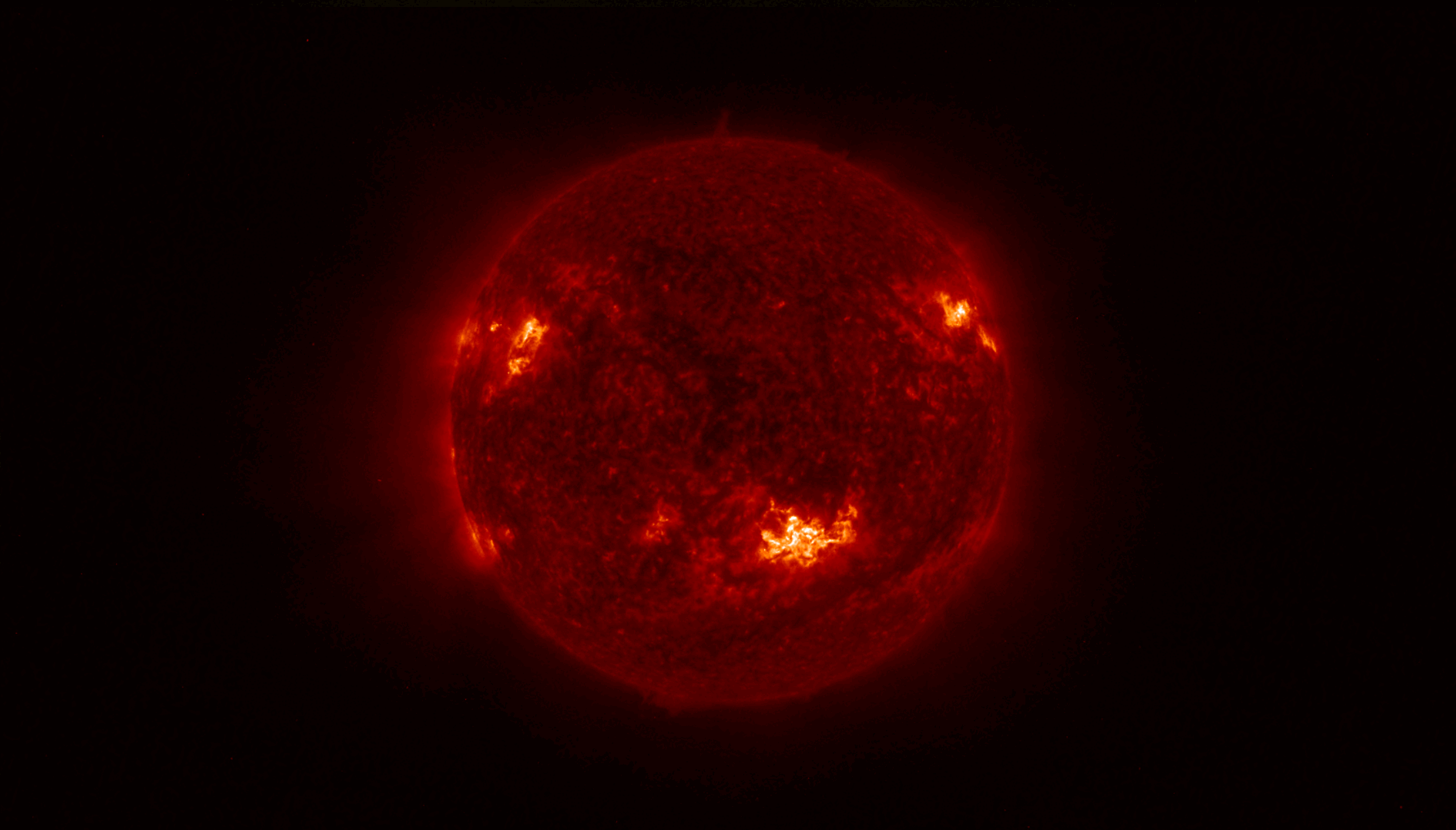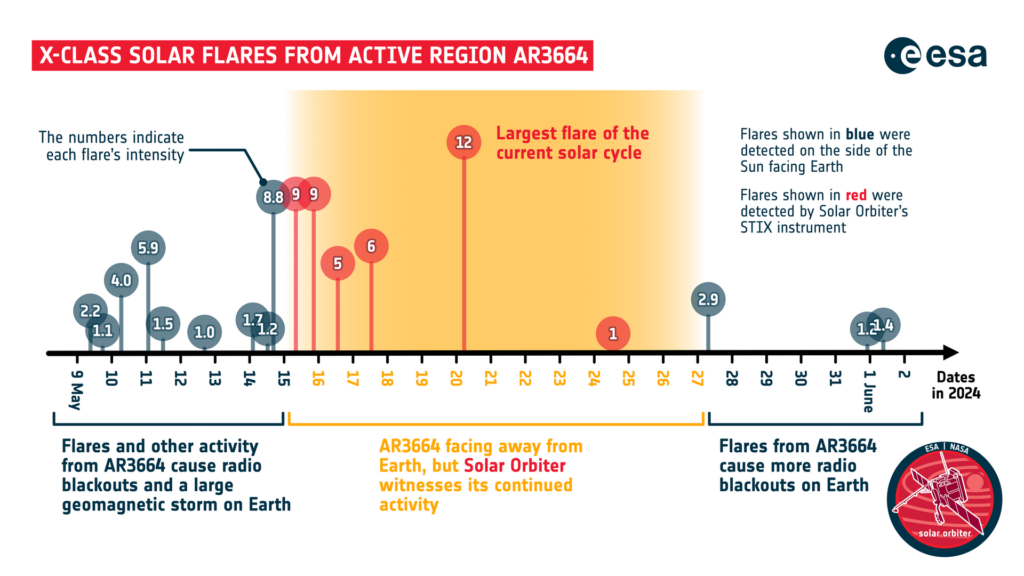The European Solar Orbiter probe has detected a solar flare class X12. It became the strongest in the current activity cycle.

In early May, the Sun produced a series of powerful flares, culminating in the largest geomagnetic storm in the last 20 years. Back then, the auroras could be observed even in Mexico and the Canary Islands.
The culprit for this activity was a group of sunspots called AR3664. When it was already at the edge of the solar disk on May 14, it produced an X8.79-class flare that caused severe interference on Earth.
After the fact that AR3664 is no longer visible from Earth does not mean that this “monster” has gone to sleep. Actually, the region produced the most powerful flare in the current solar activity cycle. This became known thanks to spacecraft, primarily the Solar Orbiter probe, which at the time observed the back side of the Sun. On May 20, its STIX X-ray instrument detected an X12-class flare. It was one of the ten most powerful flares recorded since 1996.

The flare was accompanied by a coronal mass ejection, a huge bubble of plasma consisting of particles traveling at about 3000 km/sec. The Sun ejected so much matter that it could even be seen from Earth by the SOHO spacecraft.
The coronal ejection was directed toward Mars. In the computers of the BepiColombo and Mars Express spacecraft that were in its path, the number of memory errors increased dramatically. And the star sensor of the Mars Odyssey apparatus was overloaded with energy and went out for some time. The Curiosity rover recorded a burst of radiation on the Martian surface. If people had been there at the time of the flare, they would have received a radiation dose of 8,100 microgray, the equivalent of 30 chest X-rays.
Scientists say the data collected by Solar Orbiter provides insight into what ESA’s projected Vigil mission will do. By observing the left side of the star (as seen from Earth), the spacecraft will continuously provide us with data about active solar regions before they appear in our field of view. This will provide longer-term space weather forecasts, which in turn will give astronauts beyond Earth orbit time to take shelter and operators of satellites, power grids and telecommunications systems time to take protective measures.
According to ESA


